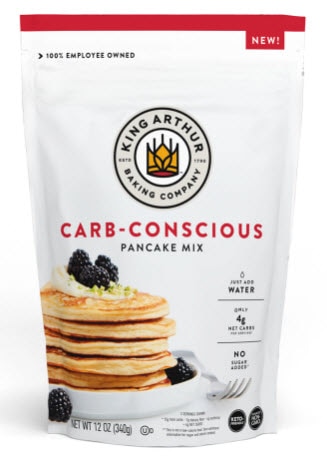If you ever considered scaling back on carbohydrates for weight loss, you are probably familiar with the low-carb diet trend. This approach grabbed the national spotlight in 1972 with the book “Dr. Atkins’ New Diet Revolution,” and what became known as the Atkins’ Diet went on to enjoy massive popularity around the world.
Predictably, many spin-off diets followed the unprecedented commercial success of Atkins, including the Zone, South Beach and Paleo Diets, and more recently, the Keto Diet. These approaches all share a primary theme, though there are some key differences, one of which is carbohydrate intake.
How do low-carb diets work?
On most low-carb diets, you typically eat 50–150 grams of carbs per day, but on the keto plan, for example, daily carb intake is restricted to fewer than 50 grams. To put that into perspective, one banana has 27 carb grams.
Perhaps most notably, keto plans center on fat, which supplies as much as 90% of daily calories. One might argue that this is counterproductive from a health standpoint since high-fat diets are proven risk factors for diabetes and certain types of cancer, due in part to increased levels of inflammation.
Protein also varies with low-carb diets. While it is comparatively high in most of these plans, keto-style diets are the exception, with protein typically around 20% of total calories. This is by design, as higher protein intake can prevent ketosis.
Ketosis is by definition “a metabolic state characterized by raised levels of ketone bodies in the body tissues, typically seen in pathological conditions like diabetes, or resulting from a diet that is very low in carbohydrates.” Instead of relying on sugar (glucose) from grains, legumes, fruits, and veggies, these very-low carb diets promote ketone bodies, a type of fuel produced in the liver from stored fat.
Risks associated with low-carb diets
While short-term carb restriction can result in significant weight loss, mostly from water and glycogen stores, there are some rather daunting health risks associated with this type of eating plan over time. Complications such as heart arrhythmias, reduced cardiac function, sudden death, osteoporosis, kidney damage, increased cancer risk, impairment of physical activity and lipid abnormalities can all be linked to long-term restriction of carbohydrates in the diet.
So, is there a way to scale back on dietary carbs that you can follow long term without the health risks linked to these low-carb/keto plans? Yes! As one research team noted, the key to safe and effective weight loss is “addressing overall dietary adequacy by encouraging plenty of high-fiber vegetables, fruit, low-glycemic-index carbohydrates and healthier fat sources.”
In other words, the healthiest way to lose weight and keep it off for good is to eat foods you enjoy, emphasizing healthy, complex, unrefined carbs that fill you up as you phase out simple, nutritionally empty carbs that merely fill you out.
Tips for following a healthier lower carb diet
Choose complex over simple carbs.
It is important to differentiate between the two. Complex carbs, including fresh fruit, veggies, intact grains, beans, legumes, nuts and seeds are not only highly nutritious, they are also loaded with satiating fiber and functional water.
Nix the white.
Instead of white sugar, white flour, and products made from these simple carbs, including commercial baked goods and processed snacks, opt for whole oats, quinoa, brown rice, and multi-grain cereals. Among many other benefits, there is an inverse correlation between whole grain consumption and the reduced risk of several chronic diseases.
Reimagine bread.
If you love bread, choose versions made with intact grains. To minimize it, try open face sandwiches, lettuce leaf “taco shells,” Portobello mushroom “buns,” cauliflower pizza crust or nori wraps. You might also like these grain-free coconut wraps, or these versatile Carrot wraps, which also come in Mango-Chipotle, Italian Tomato and other cool flavors.
Eat, don’t drink fruit.
Choose whole fruit over juice, or stick with unpasteurized, fresh-squeezed, low-sugar versions, such as grapefruit or a mix of orange, lemon, and lime juices. You can also dilute any juice with water. Check out raw/green/veggie juices too!
Go Mediterranean.
A range of studies attest to the health and longevity benefits of an anti-inflammatory Mediterranean-style diet, which typically features a high ratio of monounsaturated to saturated and polyunsaturated oils and a wealth of fruit, veggies, legumes, and grains. Mediterranean-style diets may also be neuroprotective, as they can inhibit neuroinflammation associated with Alzheimer’s disease.
Intuitively, most of us realize that extreme/fad diets are typically short-term solutions at best. Switching your focus to a whole food/lower carb menu, on the other hand ─ emphasizing complex/healthy carbs and minimizing refined/simple versions ─ is not only conducive to weight loss, but it can also support long term health and longevity. Now, how smart is that?




